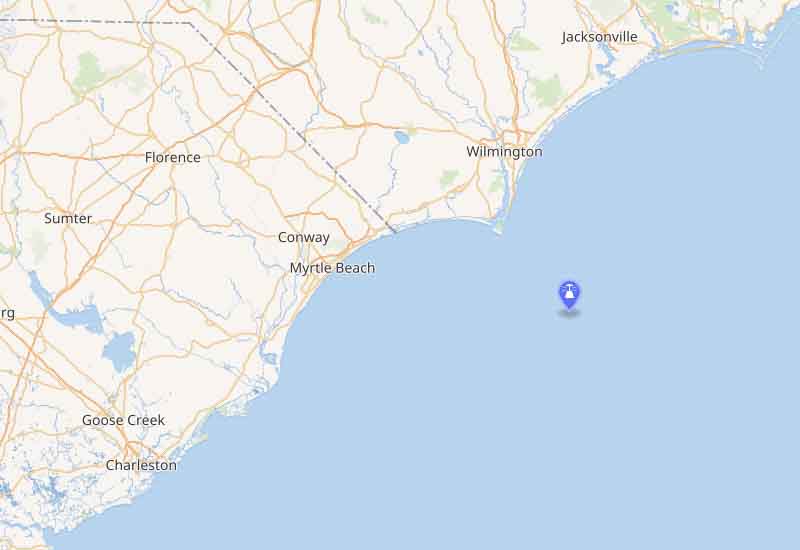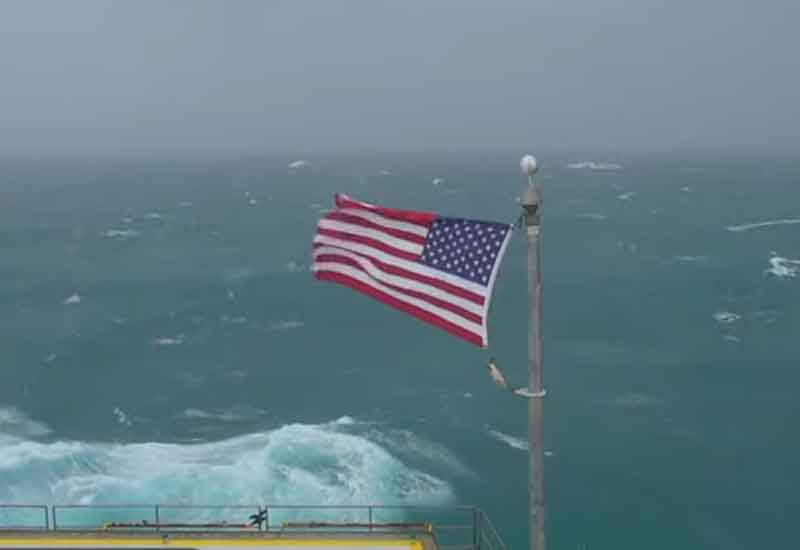A live feed of the Frying Pan tower located off the coast of North Carolina is showcasing the powerful force behind Tropical Storm Ophelia as it makes landfall.
The Intriguing History of Frying Pan Shoals off North Carolina
The Frying Pan Shoals, located off the coast of North Carolina, have long captured the imaginations of mariners, historians, and ocean enthusiasts alike. These underwater sandbars extend perilously from Cape Fear, posing considerable risks to ships that dare to venture too close. But where did the Frying Pan get its peculiar name, and what role has it played in the maritime history of the United States? Let’s dive in.

Origins of the Name
The most widely accepted theory for the name “Frying Pan Shoals” relates to the area’s shape, which resembles that of a frying pan when mapped. The “handle” of the pan corresponds to the more stable, shallow section, and the “pan” describes the broad, dangerous sandbars that have been the downfall of many vessels over the years.
A Hazardous Waterscape
The shoals have long been a navigational hazard, causing countless shipwrecks over the centuries. To mitigate these risks, the United States government built the Frying Pan Shoals Lightship in the early 20th century, and later, the Frying Pan Tower in 1964. The tower served as a lighthouse and weather station, complete with living quarters for Coast Guard personnel. Its primary function was to warn ships of the dangerous shoals that lay beneath the surface.
Transition to a Modern Landmark
After serving diligently for decades, technological advancements in navigation and communication rendered the Frying Pan Tower obsolete. It was subsequently decommissioned in the 2000s and sold to a private owner. Today, the tower functions as a unique bed-and-breakfast and a popular site for scuba diving and fishing expeditions.
Environmental Importance
Beyond its maritime significance, the Frying Pan Shoals are also ecologically important. The area serves as a habitat for a variety of marine life, including rare species of fish and coral. Its unique oceanographic conditions make it an invaluable site for marine biologists studying Atlantic ecosystems.
The Future
Today, the Frying Pan Shoals continue to intrigue people, whether they are maritime history buffs or marine biology enthusiasts. With its rich history and multifaceted importance, the Frying Pan Shoals stand as a captivating chapter in North Carolina’s long relationship with the sea.
In conclusion, the Frying Pan Shoals are much more than just a navigational hazard off the coast of North Carolina. They are a landmark with a rich history, important ecological functions, and a continued role in the maritime landscape.

